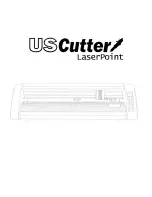
Removing
Follow the procedures above in reverse order.
Mounting the Wet Cut System (Fig. A)
Warning:
Do not use wet cut system unless tool
is protected by a PRCD.
This system minimizes airborne dust particles while
improving cutting quality and blade life.
1. Loosen the butterfly screw (3) and pull base (4) to it's
minimum depth of cut position.
2. Assemble the water valve assembly using the nozzle
provided in the tapped hole located in the casting.
4. Secure in place with correct tightening. DO NOT
overtighten the screw; this could damage the water
valve assembly.
Wet kit Assembly (Fig. A)
Warning:
Test PRCD before each use:
1. Plug PRCD into power outlet. Indicator should turn red.
2. Press test button. Red indicator should disappear.
3. Press reset button for use. Do not use if above test fails
Warning:
Check hose and water kit before each
use. Do not use if hose or water kit is damaged.
Caution:
Do not connect to water supply more
than 3 bar.
If the maximum pressure of the water
supply system is above 3 bar a pressure
reducing valve must be added between the tool and the
water supply outlet.
Cutting Depth Adjustment (Fig. D)
To increase or decrease the depth of cut, loosen the butterfly
screw (3), move the base (4) to adjust the depth, and tighten
the screw to secure the depth.
To prevent tool fault, the depth-of-cut adjustment knob has
been set to the optimal position at factory default.
Users may also set the knob to a desired position at any
time.
Instruction for Use
Always observe the safety instructions and
applicableregulations.
Ensure that the butterfly screw (3) is properly tightened
before operating the tool.
Switching On And Off (Fig. B)
Warning:
To avoid the possibility of the appliance
plug or receptacle getting wet, position the saw to
one side of a wall mounted receptacle to prevent
water from dipping onto the receptacle or plug. The user
should arrange a “drip loop” in the cord connecting the saw to
a receptacle (fig. B). The “drip loop” is that part of the cord
below the level of the receptacle, or the connector if an
extension cord is used, to prevent water traveling along the
cord and coming in contact with the receptacle.
To switch the tool on, press the on/off switch (1). To switch
the tool off, release the on/off switch. This tool has a lock-on
feature. To activate, press the on/off switch and then the
lock-on button (2). To de-activate, press the on/off button
again.
Always switch off the tool and then the power sup ply when
work is finished.
Cutting (Fig. E)
Align the front edge of the base with the cutting line on the
workpiece. Hold the tool firmly. Set the base on the workpiece
to be cut without the wheel making any contact.
Turn the tool on and wait until the wheel attains full speed.
Move the tool forward over the workpiece surface, advancing
smoothly until the cut is completed. Keep the cutting line
straight.
This tool should only be used on horizontal
surfaces.
Be sure to move the tool gently forward, in a straight line.
Forcing, or exerting excessive pres sure, or allowing the
wheel to bend, pinch or twist in the cut can cause the motor
to over heat and tool to kick back dangerously.
When the depth of cut is over 20mm deep, make 2 or 3
separate cuts to prevent motor failure.
Warning:
Do not use wet cut system unless tool is
protected by the PRCD.
Warning:
To reduce the risk of electric shock,
ensure water will not enter into your tool. Do not
touch plug with wet hands.
7
ENGLISH








































